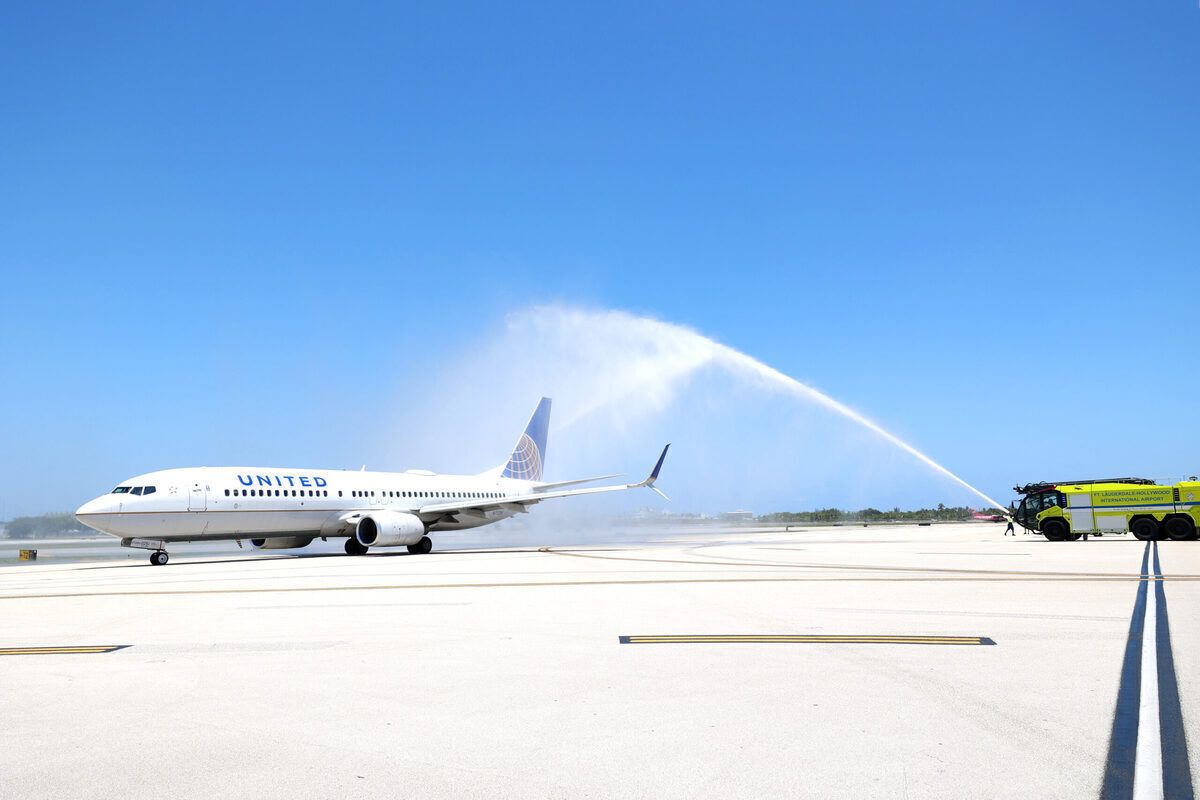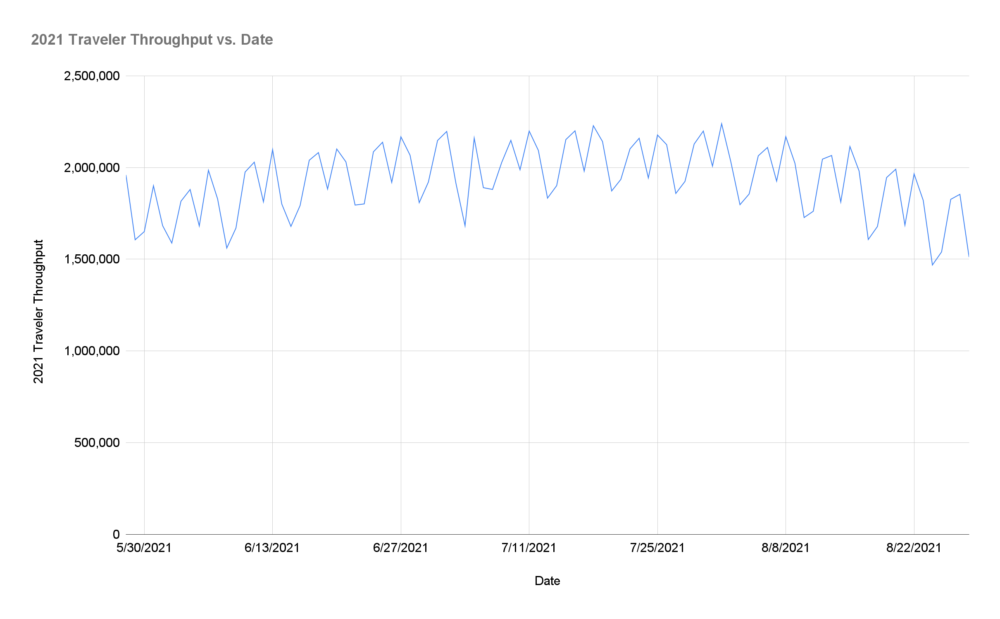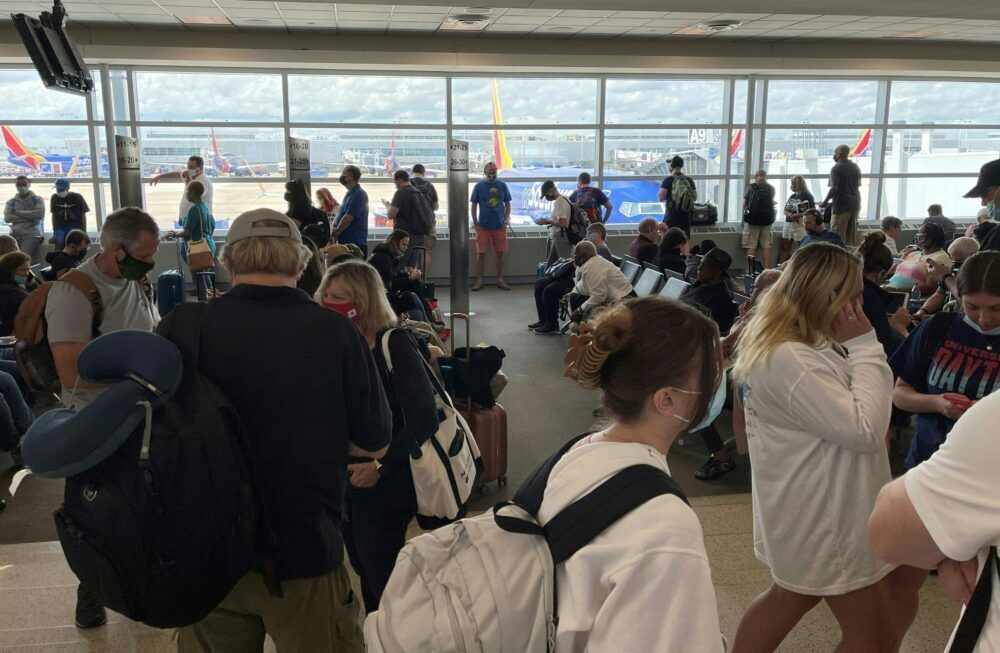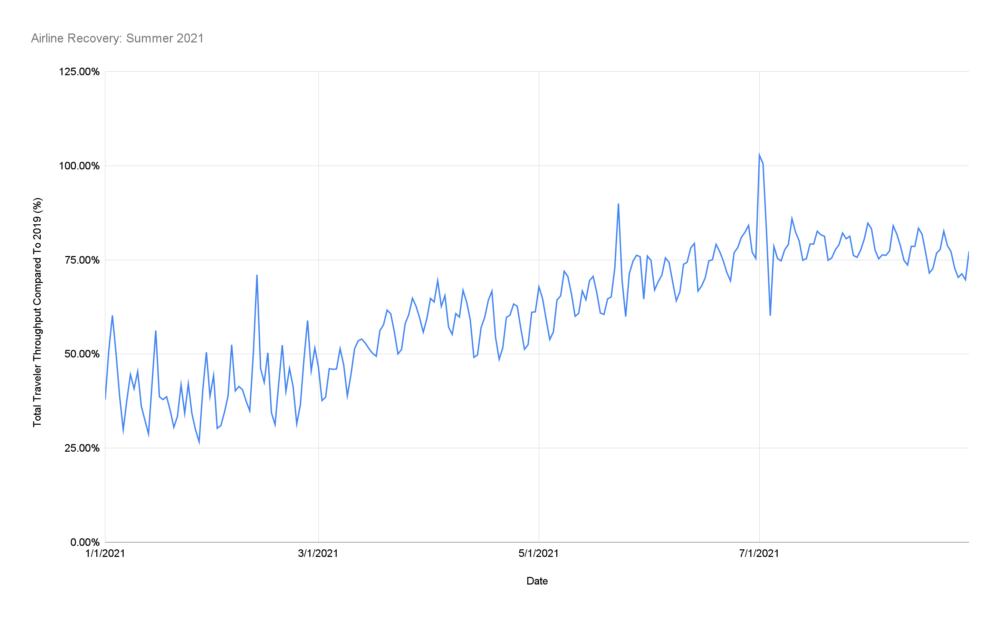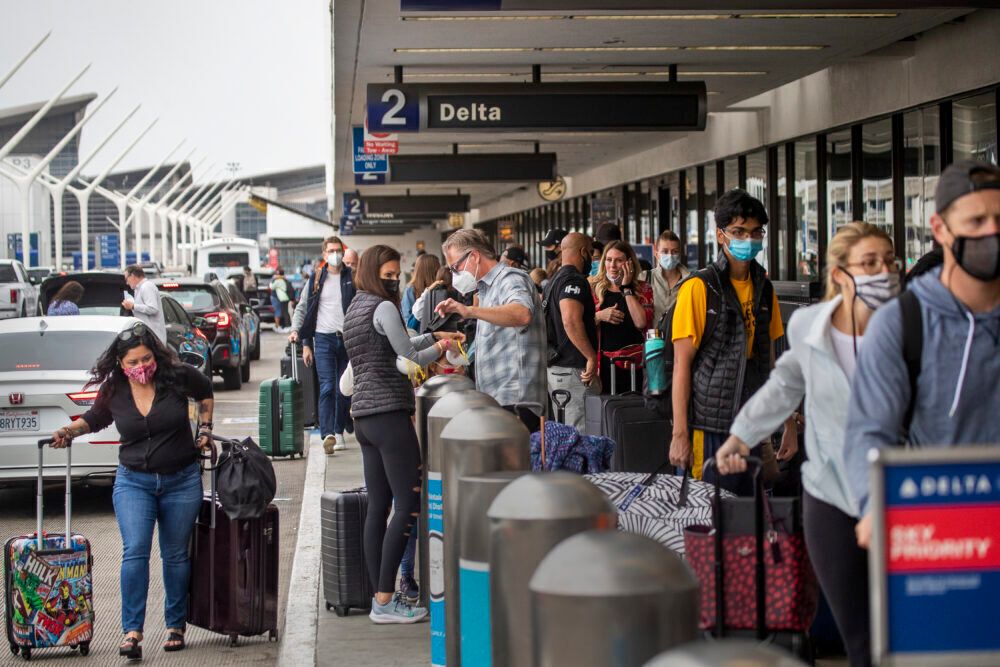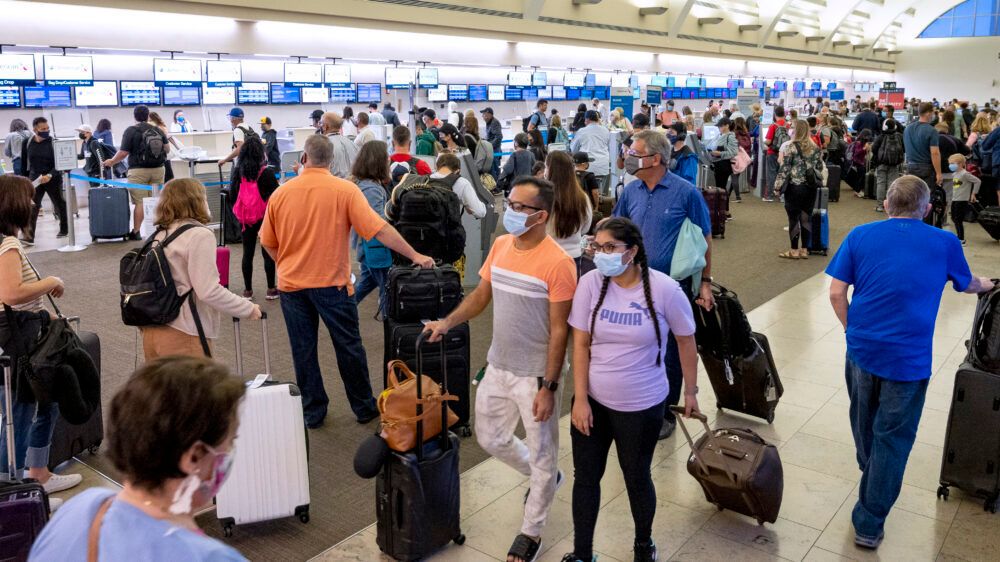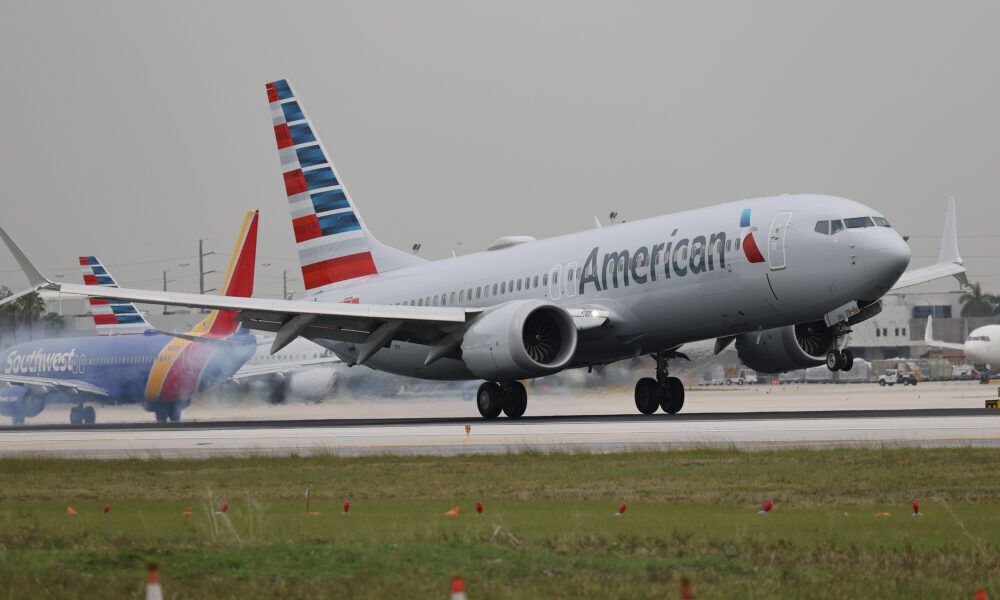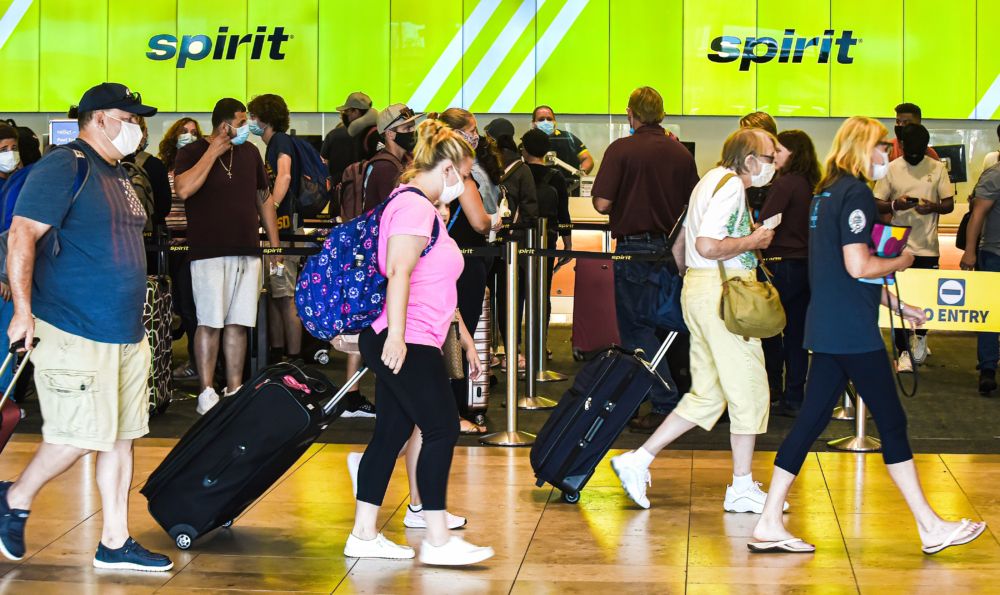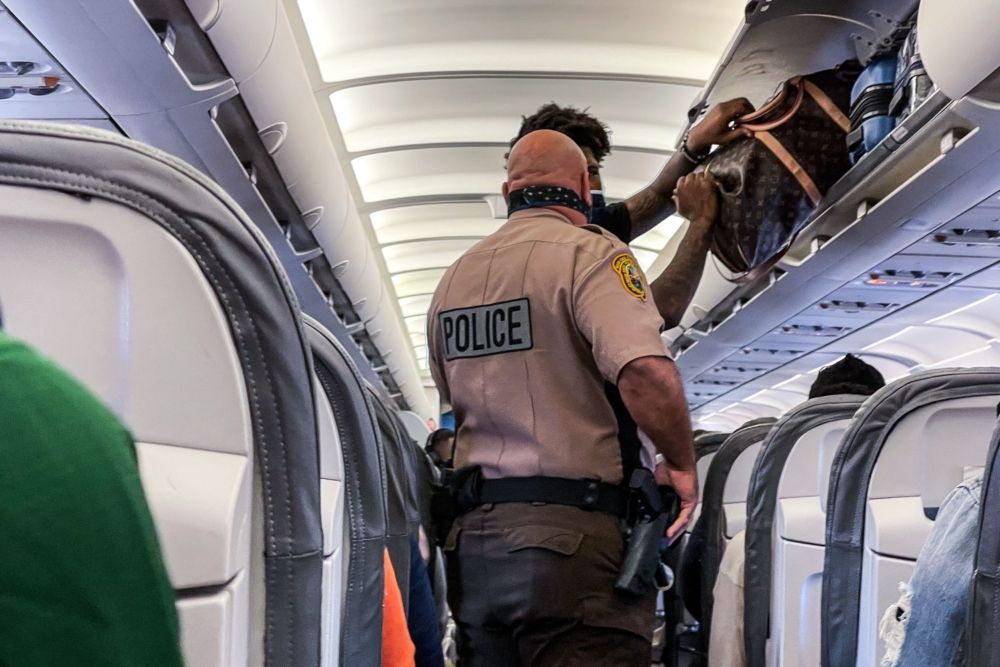With the unofficial final week of summer coming in the US, the airline industry has a lot to reflect on. With travelers returning to the skies, airlines faced a quick ramp-up of demand for travel to leisure hotspots while also seeing the return of business and corporate customers to the skies. However, the summer was not without its challenges for airlines. Here is a look back at summer 2021 in the United States.
A growing number of travelers
The first graph below shows daily passenger numbers from May 28th – the Friday before Memorial Day – through August 28th – the final day of passenger numbers at the time of publication. Some very clear trends become evident in this graph using data from the Transportation Security Administration (TSA):
The first very evident trend is that there is significant volatility in traffic numbers by day. This is not unexpected, however. Leisure travelers typically concentrate much of their flying around the weekends, mainly between Thursday and Monday, and around major holidays, like the July 4th Independence Day holiday and Memorial Day. This is what causes day-to-day volatility.
Mid-week travel, particularly on Tuesdays and Wednesdays, consistently saw some of the lowest daily passenger numbers this summer. As a result, airlines also tailored their schedules around peak-day flying to leisure destinations.
A continuing recovery
Summer 2021 was also a sort of transition year for US airlines in the recovery. As vaccinations accelerated and case counts decline, 2021 daily passenger numbers as a percentage of 2019-levels started to recover and recover quickly, as the following graph shows:
For further clarification, a value of, say, 50% indicates that on that day in 2021, US passenger numbers were 50% of what they were in 2019. When the number tops 100%, it means that 2021 traveler numbers on that day were higher than 2019-levels.
There are a few different caveats with the above graph. First, as can be seen in early January, the New Years' Day holiday in 2021 was on a different day and around a different schedule than 2019, leading to some higher-than-expected passenger numbers in 2021 due to a day with absurdly low numbers in 2019 because of the holiday. A similar situation plays out around both Memorial Day at the end of May and the July 4th Independence Day holiday in early July.
On average, July saw roughly 80% of 2019 passenger numbers each day. This compares to roughly 52% in March and 40% in January. Within about six months, passenger numbers saw an impressive recovery.
Much of this can be attributed to the rising vaccination rate, declining case counts, and the reopening of much of the United States. Individual states brought down travel restrictions, more indoor events took place, limits on outdoor gatherings started to go away, people hosted weddings again, and the business traveler started to venture out more as the summer approached.
A labor shortage started to show
The recovery in passenger traffic came at a staggeringly quick pace. This caused a strain at various points throughout the travel process. Ahead of the summer season, the TSA warned that it would be understaffed in many locations. Airlines saw labor bottlenecks in their vendors and a shortage of crucial ground staff. In addition, concessions remained understaffed at many locations in the United States, leading to long lines to get food or other necessities before stepping on the airplane.
Airlines, concessions, and vendors started to boost their hiring as the summer approached. However, most continued to see some labor shortages as the summer hit. This led to long lines at security, long lines to check-in, and long lines for passengers to collect a rental car or purchase a sandwich.
Stay informed: Sign up for our daily and weekly aviation news digests.
Airlines faced problems and tweaked their schedules
American Airlines, Southwest Airlines, and Spirit Airlines faced high-profile operational issues at various points through the summer. Generally caused by a confluence of various events, this led to flight cancellations, lengthy delays, and a rise in frustrated travelers.
Heavy storms, IT issues, and a labor shortage all contributed to the operational disruptions. Without large crew reserves, a crew that was stranded in one city or that could not make it to the airport was not easily replaceable with another, compounding issues of weather-related delays and cancellations. This also led to social media reports of lines that stretched through terminals for rebooking and other customer assistance points.
As a result, airlines had to rationalize their operations and pull down some of their anticipated flying. This came as they continued to ramp up their hiring, get pilots and flight attendants trained and ready to go back to work, and simplify their fleets.
Spirit Airlines, in particular, suffered a massive operational hit at the end of July and in early August. Mass cancellations and stranded passengers became headline news as the airline, on some days, was flying less than half of its passengers. The carrier took a few days to fix its operations and has been flying as smoothly as possible since. However, it learned from the issues by bringing down some of its planned flying through the remainder of the year to minimize large operational disruptions from occurring in the future.
Unruly passenger reports remained high
Unfortunately, other headline news this summer involved disruptive passengers. This included high-profile incidents where passengers needed to be taped down to their seats after becoming disruptive inflight. Other incidents happened on the ground, with some passengers growing physically and verbally abusive towards fellow customers, crew, and staff. There were plenty of fights to go around.
This led to the Federal Aviation Administration (FAA) pulling out the stops with huge fines for disruptive customers. The organization has proposed over $1 million in fines against passengers who caused an inflight disturbance, with fines in the tens of thousands of dollars per person.
The post-mortem of the reason for unruly passengers coming out in high numbers this year compared to pre-crisis will continue. Still, fingers have pointed to refusal to comply with the federal mask mandate, people who consumed too much alcohol, and a general disruption with people coming back to a changed society.
Did you travel this summer? What was your experience like? Let us know in the comments!

